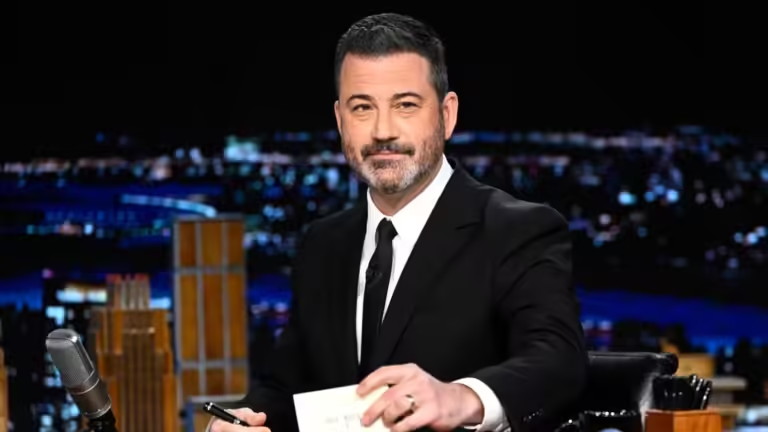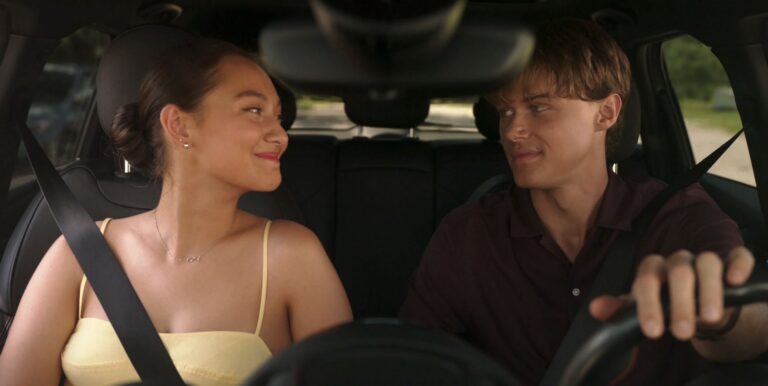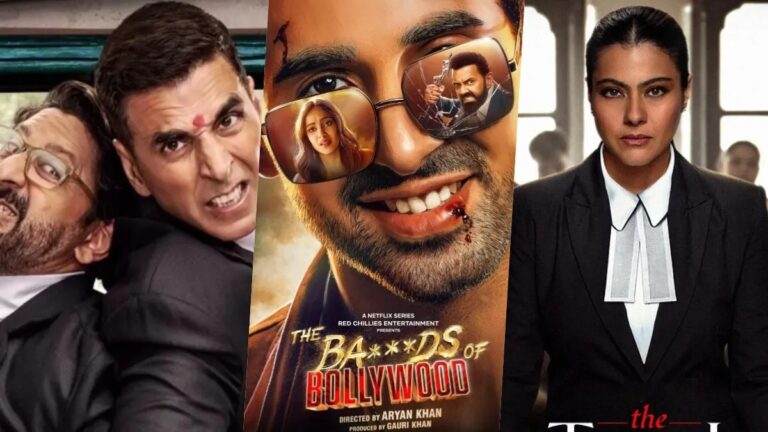
It’s 1997, a girl dressed in white makes her way through the green fields, and mesmerizing mountains. With the wind playing with her dupatta, she’s enjoying herself in the beautiful landscape while her mind is occupied with the most powerful human emotion – love. No, this is not a dream, this is a scene from the iconic Dil To Pagal Hai, describing exactly how the cinema of late Yash Chopra was – peaceful, pure, and poetic.
This is what he did, he gave us love that we could feel without words. He made us believe in waiting, hoping, and dreaming. From the ‘70s to the 2000s, his stories gave love a soul. He was not just another director. He was the Father of Romance in Hindi Cinema.
Even today, years after he passed away, his kind of love exists in our hearts, and there are countless reasons for that. Through this article, we’ll make you go through some of them, and once again fall in love with the world where men were more than protectors, women were more than eye candies, and love was everywhere – The World Of Yash Chopra.
Love Through The Lens Of Yash Chopra
Love, for Yash Chopra, wasn’t always about getting the one you loved. It was about holding on, even when you had to let go. Love for him, was never simple, or perfect. He explored love in all its shades.
In Kabhi Kabhie, one of his best musicals, and a star studded romantic, love lingered in the verses of a poet who chose duty over desire. Veer-Zaara, the iconic film where love crossed borders, began with a poetry that captured hearts. In Silsila, he explored forbidden love, not to justify it, but to understand its emotional pull. And Lamhe talked about love across generations, and explored the uncomfortable idea of a man falling for the daughter of the woman he once loved.

He took risks, and was unafraid to tackle bold, and complex themes at a time when they were considered a taboo. He told stories where love didn’t follow rules. Rather, it simply existed with all its flaws. And through these, he made love to be seen as raw, and real, not just dreamy.
The music, and dialogues in his films, felt like poetry. From Tere Liye (Veer-Zaara) to Lagi Aaj Saawan (Chandni), the songs were pure melodies, radiating romance, and reflecting the true essence of his films.
Yash Chopra shaped Indian cinema’s most beloved love stories. He became the storyteller of emotions who brought life to the ache of longing, the quiet joy of companionship, and the heartbreak of letting go. His films whispered to the souls. And in those whispers, millions found pieces of their own love stories.
“Human beings are very complex creatures. This desire, this greed, this love is very complex.”
– Yash Chopra
Women in Yash Chopra Films

The women in his films were never just pretty faces used to attract the audience. They were strong, real, and full of emotions. In Silsila, Shobha (Jaya Bachchan) held her ground even when her world broke. On the other hand, Sridevi gave us two unforgettable women – one serene, and mature, the other bold, and youthful, in Lamhe.
His heroines made choices, they didn’t wait for the heroes to save them. Zaara, in Veer-Zaara stood up, and gave up everything for what she believed in, even when it meant waiting for years. These women cried, laughed, and loved fiercely. But they were never weak. They weren’t rescued by men.
Yash Chopra made them shine, not just in the famous chiffon sarees, but in their bold hearts. They made decisions, and challenged traditions. He showed that women can be soft, and strong, all at once. He celebrated femininity without objectifying it. In his stories, they mattered, just as much as the men.
His Gentle Heroes

In an era dominated by macho heroes, Yash Chopra created men who cried, wrote poetry, and waited endlessly.
While Veer chose sacrifice over escape, and aged behind the bars for his love in Veer-Zaara, Rahul, in Dil To Pagal Hai, was a dreamer who believed in soulmates, and wasn’t afraid to say so. On the other hand, in Silsila, Amit was a poet who was lost in nostalgia. His men were soft, and that was their strength.
They didn’t need violence to prove their worth. Rather, they expressed vulnerability without shame. Because, in Yash Chopra’s world, men loved with their hearts fully open, and that defined a powerful kind of masculinity.
Exploring The Dark Side Of Obsession

When Darr was released in 1993, it left the audience in shock. This wasn’t what they had expected from a Yash Chopra film. Instead of gentle romance, he gave us obsession. Shah Rukh Khan’s Rahul in Darr was a stalker, unlike the Rahul from Dil To Pagal Hai that he portrayed later in 1997 under the same director. He was a man who gave you chills, not warmth, as his voice echoed “I love you, K-K-K-Kiran”.
And the film still worked. Because the obsession wasn’t glorified, but exposed to the world. The film indeed was a risk, but Yash Chopra proved that he could step out of romantic fantasy, and into the darker corners of love.
While his other films made love feel sacred, Darr showed what happens when it turns into madness. And this contrast only deepened his range as a filmmaker.
Yash Chopra, & Visual Poetry
Not just through words, but Yash Chopra’s films involved poetry through visuals too. He portrayed love through light, color, and motion.
He filled his frames with natural beauty – snow-covered Swiss mountains, golden fields of Punjab, and candle-lit interiors. His visuals reflected the emotions of his characters. He transported the audience to dreamlike backdrops that made them deeply feel the romance in his stories.
“I always believe that my films should give some hope to the man who comes to watch them
for those three hours. If he goes home on an optimistic note,
I would feel satisfied at having done my duty.”– Yash Chopra
He mixed the modern elegance, and foreign landscapes with Indian warmth. His characters wore western clothes, but held Indian values. Through his films, the chiffon saree became a symbol of longing, beauty, and softness.
Moreover, his attention to details in production design was remarkable. The visually stunning sets, including the lavish mansions, and the iconic courtroom from Veer-Zaara, enhanced the visual appeal of his films.
He was known for his captivating visual imagery, and innate ability to mesmerize the audience with unique aesthetics, and till date inspire the film industry.

Jab Tak Hai Jaan : His Last Love Letter
In 2012, before he passed away, the legendary director had announced his retirement from direction in a conversation with Shah Rukh Khan. On being asked by SRK about his next film, he had told the actor that Jab Tak Hai Jaan would be his final one. He said that he was content with everything he had done. And that awareness made the film even more special for his fans, as it was his last love letter to cinema.
The film brought together all his themes : unfulfilled love, sacrifice, and poetry. The film of course had a grandeur, but it also had soul. Yash Chopra poured decades of experience into it, making sure that his final frame felt just as heartfelt as his first.
During the production of the film, in the same year, the Hindi film industry bid bye to the soul of their favorite love stories, as he passed away due to dengue fever. To pay him a tribute, his last film Jab Tak Hai Jaan’s title song included his clips from the shoots, with the lyrics that completely described the industry’s love for him.
It was a reminder that even in goodbye, there can be beauty. And in endings, there can be love. Just the way his films has taught us throughout the years.
Lasting Legacy
Yash Chopra’s spirit still lives on in every mustard field, every soft gaze, and every love story that dares to feel deeply. He gave us moments that became memories we’ll cherish forever. His cinema taught us to believe in love that waits, love that hurts, and love that heals. His cinema showed us the power of feelings, and made us dream.
And as long as hearts long for poetry, and passion, his stories will never fade. They’ll live on – timeless, pure, and forever loved.
For more such insightful stories, stay tuned with The World Times.



